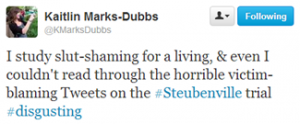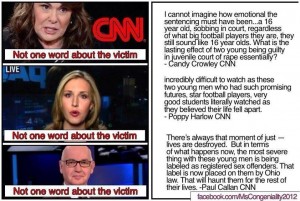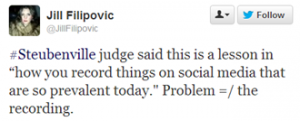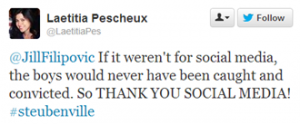I want to talk about a young black man subjected to violence by a law enforcement figure. No, not 17-year-old Trayvon Martin, stalked and killed by a vigilante neighborhood watchman who was acquitted—at least not yet.
Nor 14-year-old Tremaine McMillan of Miami, FL, “forced to the ground” and “choked in a headlock” “as he played with his puppy on the beach” “because the police said his body posture was ‘threatening’—and then charged with a felony.”
Nor 15-year-old Kiwane Carrington, whose shooting death by a police officer here in Champaign was ruled an accident and the officer was suspended for 30 days for poor firearm handling.
Nor the thousands with whom I could go on except that they haven’t been brought to national attention so I haven’t even heard about their stories.
I want to talk about 22-year-old Oscar Grant, fatally shot in the back while lying face down on a BART platform in Oakland on New Year’s Day 2009. The BART police officer served 11 months for involuntary manslaughter after claiming he meant to use his TASER.
This is, of course, because I saw Fruitvale Station last week. And you know, even though one goes into it knowing how it ends, it’s still incredibly moving. The film has some problems, but effective acting is not one of them.
As I was walking out of the screening, I commented to my movie buddy that some people were upset because a scene where Grant is nice to a dog was fictional, put in to make it clear he was a nice guy (which I read somewhere but can’t find now).
She replied that the film had gone overboard with making him seem like a nice guy. The result, she said, was that it conveyed that he shouldn’t have been killed because he was a nice guy, not because he didn’t do anything wrong—a critique echoed by the negative film critic reviews at The Dissolve and Variety.
And she has a point to the extent that even not-nice people shouldn’t be shot to death for no reason.
But you know, (and now I come back to that first young black man in the list of those subjected to violence by a law enforcement figure) I think about how many times I read in comments (and, I know, I know, “Don’t read the comments!”, but-) people calling Trayvon Martin a thug because he apparently smoked pot and got in fights at school sometimes (neither of which carry a death penalty, last time I checked).
I think about how the trial of George Zimmerman for killing Martin hinged on whether six women (either all or 5/6ths white) bought the narrative of “Zimmerman was threatened by a black thug” or that of “Martin was a child attacked by a vigilante,” and the first narrative won the jury over.
Putting those things alongside my friend’s feeling that the treatment of Grant was heavy-handed makes me think that she and I, white people who already understand both “Even not-nice people don’t deserve to die” and “Young black man does not equal thug,” are not who that aspect of the movie was for. (Which isn’t to paint us as “enlightened” so much as meeting a basic standard of understanding that, surprisingly, is not so basic.)
The movie was making a case to those people who look at someone like Grant or Martin and see not a human being but a threat, and people with that view may well need to be hit in the face with the argument to have a chance at believing it. Certainly, the odds of people who equate youthful black masculinity with thuggery going to see Fruitvale Station may be low, but that’s who the continual insistence on Grant’s niceness at every turn was having an argument with.
Bad film-making, perhaps. But culturally vital.
Overall, recent events make me think that, given the systematic devaluation of black men’s lives, the tiny intervention of “He shouldn’t have been killed because he was a nice guy” might be what there is, right now. That “Thugs are people, too” might just save somebody’s life, since “Not a thug” seems to be incomprehensible to far too many people with guns and authority.
A disclaimer feels necessary here. I know more about how race works than the vast majority of white people because of my education. I have had that vertigo feeling of realizing my life is worth less in the social ledger than other people’s because I read as queer. But I am aware how limited that knowledge is, that it’s not the same.
I understand that I fundamentally can’t imagine what it’s like to live under the threat exemplified by the cases of Trayvon Martin, Kiwane Carrington, and Oscar Grant. Of Rodney King, Tremaine McMillan, and Calvin Miller. I write, then, from a position of knowing enough to know what I don’t know.
But even if “Thugs are people, too” is all there is right now and what we have to work with in the short term, in the long run the systematic devaluation-fear of blackness (mostly masculinity, but the refusal of legitimacy to Marissa Alexander’s “stand your ground” warning shot that hurt no one demonstrates the ways black women quickly get moved into the “irredeemably violent” box, too) is where the fight is.
I haven’t posted anything about Trayvon Martin since the verdict. I’ve retweeted smart things that came through my feed, pointed out a very telling Google algorithm moment, but mostly it felt like a more important time than ever for white people to not be deciding what Trayvon Martin’s life and death meant. Who was I to think that my opinion mattered in that moment?
The Crunk Feminist Collective posted on Facebook: “Calling all white feminists allies: Where are y’all? <looking far and wide> Your silence around the Zimmerman Trial speaks volumes. [ . . . ] Where is *your* intersectional analysis about white privilege, that not only calls out the operations of racism, but the particularly gendered operations of racism in the hands of these white women jurors?” (Via Amanda Ann Klein’s blog post taking up the challenge.)
The poster is right that this is work white feminist humans need to do, even as I’m still uneasy even in this blog post with asserting that what I think about this matters.
But I think my role as an educator is exactly a place to make an intervention in the systematic devaluation-fear of blackness. Maybe, if I’m lucky, even one slightly larger than tiny.
In my Intro to Gender Studies class this year, I want to find a way to work in a discussion about the role of masculinity in Trayvon Martin’s death, and how it intersected with race and class in the killing and the trial (and, at times, homophobia in suggesting Zimmerman’s following seemed like impending gay rape). I want to help my students understand the role of whiteness and femininity with those jurors from selection to verdict. All of it.
It’s pedagogically sound, but more importantly ethically incumbent on me as someone who understands these things and has an opportunity to help others understand them. There’s also the role of my (racial, educational, employment) privilege in making me someone to whom the flock of (mostly) middle class white kids on the other side of the classroom is likely to listen to.
If you’re a teacher interested in pitching in to help change the cultural narratives that, ultimately, killed Trayvon Martin (which is not to absolve Zimmerman, clearly), keep an eye on http://teachingtrayvon.org/, curated by my colleague Safiya U. Noble, Ph.D. and going live mid-August.




